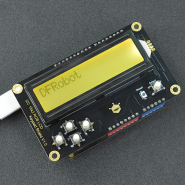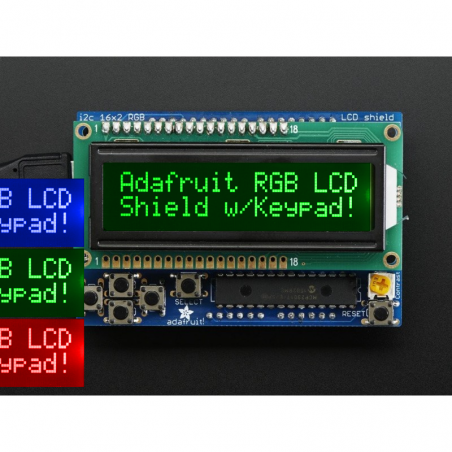

LCD05-20x4-Green

LCD05-16x2-Green
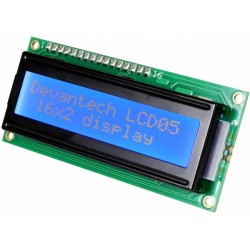
LCD05-16x2-Blue
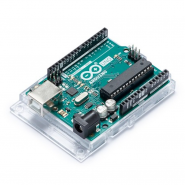







O shield LCD da Adafruit que usa apenas 2 pinos para comunicação. Para quando precisa de usar um shield LCD e fica limitado no número de pinos que ficam disponíveis, aqui tem a solução. Com a iluminação de fundo RGB pode mudar a cor do display em função do tipo de informação que está a apresentar. Mensagens de alerta a vermelho ou tudo normal a verde!
DESCRIÇÃO EM PORTUGUÊS BREVEMENTE DISPONÍVEL
Se tiver alguma dúvida neste produto não hesite em contactar-nos.
*Atenção: as imagens são meramente ilustrativas.
This new Adafruit shield makes it easy to use a 16x2 Character LCD. We really like the RGB LCDs we stock in the shop both the RGB negativeand RGB positive. Unfortunately, these LCDs do require quite a few digital pins, 6 to control the LCD and then another 3 to control the RGB backlight for a total of 9 pins. That's half of the pins available on a classic Arduino!
With this in mind, we wanted to make it easier for people to get these LCD into their projects so we devised a shield that lets you control a 16x2 Character LCD, up to 3 backlight pins AND 5 keypad pins using only the two I2C pins on the Arduino! The best part is you don't really lose those two pins either, since you can stick i2c-based sensors, RTCs, etc and have them share the I2C bus. This is a super slick way to add a display without all the wiring hassle.
This shield is perfect for when you want to build a stand-alone project with its own user interface. The 4 directional buttons plus select button allows basic control without having to attach a bulky computer.
The shield is designed for 'classic' Arduinos such as the Uno, Duemilanove, Diecimilla, etc. It uses the I2C pins at Analog 4 and Analog 5. It will also work perfectly with Arduino Mega R3's which have the extra SDA/SCL I2C pins broken out. Earlier Mega's have the I2C pins in a different location and will require you to solder two wires from the I2C pins on the shield and plug them into the different I2C locations at Digital 20 & 21. This shield will not fit easily on top of an Arduino Ethernet because of the Ethernet jack height. You can use a set of stacking headers to give the shield more 'lift' above the jack.
This product comes as a kit! Included is a high quality, USA-made PCB and all the components (buttons, header etc). This product comes with a 16x2 RGB negative. Assembly is easy, even if you've never soldered before and the kit can be completed in 30 minutes. Check the product tutorial page for assembly instructions before purchasing
Of course, we even wrote an easy-to-use Arduino library that you can easily add to your project. It acts just like the built in LiquidCrystal library, but automatically uses the shield pins. You can also easily query the 5 keypad buttons to get input through the library, so you get extra buttons without using any more pins. The buttons are automatically de-bounced inside the library.
At this time, the library and shield can control the RGB backlight of our character LCDs by turning each LED on or off. This means you can display the following colors: Red, Yellow, Green, Teal, Blue, Violet, White and all off. There is no support for PWM control of the backlight at this time, so if you need to have more granular control of the RGB backlight to display a larger range of colors, this shield can't do that (the I2C expander does not have PWM output).
Product page with tutorials, documentation and assembly information
Produtos Associados




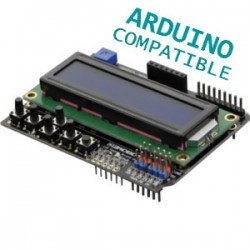

O shield LCD da Adafruit que usa apenas 2 pinos para comunicação. Para quando precisa de usar um shield LCD e fica limitado no número de pinos que ficam disponíveis, aqui tem a solução. Com a iluminação de fundo RGB pode mudar a cor do display em função do tipo de informação que está a apresentar. Mensagens de alerta a vermelho ou tudo normal a verde!
